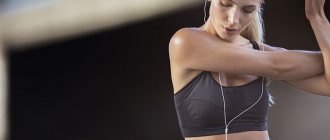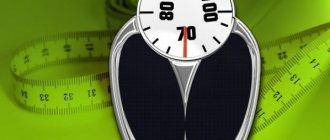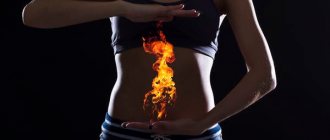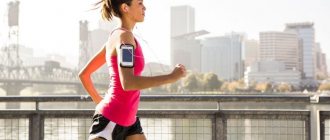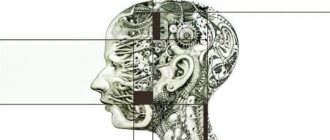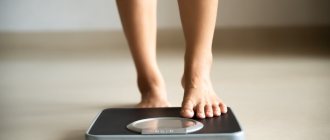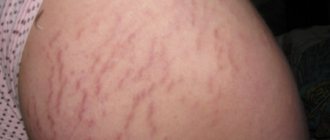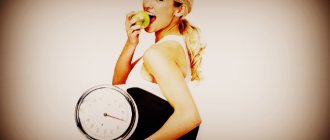You can’t even imagine how often a stretching coach hears the phrase: “Splits are not for me, I’m a tree.” And it would seem that the comedy, with such a “vegetative diagnosis,” is a stretch, but the truth is that this is an excellent starting point. It is from this that you need to start in every sense and understand what prevents the body from being flexible and healthy. Coach and author of a blog about stretching, Victoria Reshulskaya, talks about what causes poor stretching and flexibility.
There are genetic factors, they cannot be changed, but they need to be taken into account when drawing up a training plan - this is the structure of joints and muscles, the organization of the nervous system. For example, with joint hypermobility and connective tissue dysplasia, first of all you need to strengthen and engage the muscles, and if they are naturally stiff, then add myofascial release (MRI) to your training. There are acquired factors - injuries, sprains, psychological pressures.
What is the connection between all these formulations from biology and elementary psychology lessons and stretching? I assure you, it’s the straightest, literally, like a split.
Let's look at the most common reasons.
Traumatic experience
The human body often represents a “war map” in the form of fractures, displacements, protrusions, curvatures and other consequences of a sedentary or, on the contrary, too active lifestyle. It is logical to assume that chronic injuries without rehabilitation, disorders of the musculoskeletal system and various pressures that arise as a result of attempts to compensate for one or another dysfunction of the body have a huge impact on a person’s stretching. Imagine jumping ropes, if they are all knotted, scuffed, with tears, will it be easy to practice with them? Absolutely not! First you need to remove everything that interferes with ease of movement. Unfortunately, it sounds cruel - instead of a magic pill for hyperflexibility, there is a long process of exercising your body. When the problem already exists, it needs to be solved with the help of massage, osteopath and rehabilitation techniques. Therefore, before you start stretching, collect an anamnesis and, if necessary, conduct additional studies, such as an MRI. This will allow you to identify points of special attention and protect you from new injuries.
Treatment of seizures and accompanying pain
If the feeling of muscle tightening occurs suddenly and is associated with uncomfortable shoes or posture, try changing your position. A light massage and muscle stretching will also be helpful.
Treatment of pathologies associated with muscle contraction is complex. Depending on the specific disease and individual characteristics of the body, the doctor prescribes certain medications and may recommend physiotherapeutic “support” of therapy - therapeutic massages, physical exercise, yoga, acupuncture, acupuncture, etc. For gastrointestinal pathologies, a diet is prescribed.
In our clinic you can undergo a full examination, assess your health and save yourself from possible problems.
Sign up at the MART medical center in St. Petersburg (see map) by calling 8 or leave a request on the website.
Hormonal disorders
The function of hormones is to stimulate, set in motion; our appetite, energy levels, and even social achievements depend on them. Did you know that testosterone is responsible not only for a person’s libido, but also affects their sense of humor and career ambitions. People who have elevated levels of this hormone are capable of intense, long-term exercise, have strong willpower and the ability to complete tasks. What about serotonin? Even by the biodynamics of the body one can determine its level; if the shoulders are lowered and looking forward, then this screams about extremely low serotonin values. Cortisol is just as important in the waltz of hormones, and stress has been proven to interfere with the development of flexibility, as if it is freezing your muscles. As they say, “all diseases come from nerves”? As they say, “all diseases come from nerves”? Therefore, not only for the sake of splits, but also for the sake of health, it is worth putting your hormonal levels in order; the good news is that you can control some of them yourself. The stress hormone cortisol can be corrected by breathing practices, sleep patterns and reducing caffeine doses, and serotonin can be increased by massage, increasing vitamin B and regular exposure to the sun, giving up sugar and adding magnesium to the diet.
For women, it is important to build a training plan in accordance with the menstrual cycle: in its first phase, you can and should stretch, but in the third and fifth this is fraught with injuries, but in the second and fourth it is easier to achieve impressive results.
What are the causes of muscle tightening?
Among the temporary, non-pathological factors that cause seizures, there are:
- Uncomfortable shoes;
- Intense physical activity, especially in the heat;
- Frequent static load on a specific muscle group;
- Uncomfortable position or incorrect posture.
At the MART clinic on Vasilyevsky Island
- Experienced doctors (including those practicing in the USA and Europe)
- Prices affordable for everyone
- Expert level diagnostics (MRI, ultrasound, tests)
- Daily 8:00 — 22:00
Make an appointment
Getting rid of the problem is simple - eliminate the root cause, and the cramps will go away on their own.
It’s another matter if muscle tightening and tension are provoked by pathological changes. This requires a mandatory consultation with a neurologist and additional diagnostics.
Your doctor may give you one of the following diagnoses:
- Viral infection;
- Disturbances in the functioning of the nervous system;
- Injuries, muscle strains, etc.;
- Metabolic disorders, including a lack of certain chemical elements - potassium and magnesium;
- Vascular damage;
- Varicose veins and more.
Psychological clamps
Our psychological state linearly affects the body. We have already discussed the power of stress; everything begins with it, but does not end. Such a common condition as hypertonicity creates excessive tension in the muscles, which interferes with stretching: hypercontrol and fear do not allow the body to relax and maintain a certain position in space.
The brain constantly analyzes what is happening, whether it likes it and whether everything is going according to plan. A lot happens in the mind when the connection with the body is broken.
With emotions, everything is also ambiguous; if fears and resentments are suppressed, and not accepted, then they will remain blocks in the body. From the point of view of functional anatomy, a block is a tissue condition characterized by its shortening, increased density and rigidity. Over the years, the situation gets worse and worse, as the body turns on adaptation mechanisms that are not always environmentally friendly. The advice is simple: give free rein to emotions and work through existing psychological obstacles; the means can be different, both purely psychological and bodily oriented.
Features of pain
Most often, patients call “muscle tightening”:
- Damage to muscles with their “hardening”;
- Minor stabbing pain of inaccurate localization;
- Numbness;
- Even an outwardly noticeable distortion or twitching of muscles.
If we are talking about the so-called muscle tension syndrome (which combines all of the above symptoms), then when you feel a certain area, you can feel pain and excessive contraction of tissue. Often the thoracic spine becomes poorly mobile, and the sensations spread to the lower back.
If you have any questions, ask our specialist! Ask a Question
Seizures may accompany other clinical symptoms, depending on the specific pathology. These are general intoxication, trembling of the hands or legs, awkward movements, decreased reflexes, nagging pain in the limbs and others.
Frequent, intense or prolonged seizures require mandatory consultation with a neurologist! They are associated with a number of pathologies, the complications of which can affect the health of the entire body.
In our clinic, an experienced neurologist will provide you with an individual consultation; He will tell you about the causes of seizures in your case and select a special treatment plan.
Reason 2. Creates a beautiful body contour
When it comes to having an ideal figure and a flawless silhouette, the first things that come to mind are intense cardio and exercise equipment. On the one hand, this is true. Proper nutrition, the right combination of cardio exercises and strength training will allow you to lose excess weight and tone your entire body. However, most trainers will confirm that it is stretching that will bring the figure to perfection. This load makes the body relief more elongated and soft. Stretching is especially important for those who want to build muscle in certain areas through strength training, but are wary of too tight muscles that make the figure look stocky and heavy. To prevent this from happening, it is enough to attend a stretching class a couple of times a week (preferably the next day after intense work on machines or with free weights). On it you will stretch all your muscles well, which guarantees you not only a flexible, but also a very graceful figure.
Reason 5: Reduces the chance of injury
This reason is important not only for those who often visit the gym or go for a run every morning. In everyday life, we constantly expose our body to the risk of injury. Unsuccessfully bent over or picked up heavy bags from the floor, tripped on the stairs, slipped on ice on the street... Almost any household activity can lead to injury to muscles, joints or ligaments. Regular stretching can significantly reduce this risk. As we already found out above, it makes our muscles and ligaments more elastic. This greatly reduces the likelihood that, by bending or stretching incorrectly, you will get a pinched nerve or injure your joints.
Causes of muscle aches
Physical overexertion
Moderate soreness and heaviness in the muscles appear in the late afternoon due to the depletion of glycogen reserves and the accumulation of lactic acid in the muscle tissue. The muscles of the legs and arms ache in untrained people after working out in the gym; too intense loads in athletes are also accompanied by ache. Heaviness and nagging pain occur in people who spend all day on their feet. At the same time, the legs seem to “hum”, it becomes painful to walk, and superficial veins are clearly visible on the skin. Discomfort decreases after a couple of hours of rest with the lower limbs elevated.
Avitaminosis
A common cause of muscle aches in the autumn-winter period is a lack of B vitamins and ascorbic acid, hypovitaminosis E. These substances promote adequate blood supply and muscle trophism, improve neuromuscular conduction. With vitamin deficiency, severe weakness occurs, which is most pronounced in the limbs. It is difficult for a person to perform usual physical activities; trembling is felt in the muscles. Aches and paresthesias (a feeling of “crawling goosebumps”, tingling) occur periodically at any time of the day. A petechial rash sometimes appears on the skin.
Myositis
The first sign of a nonspecific inflammatory process is a sudden onset of aches and pain in the muscles. Characterized by severe dull or shooting pain, which limits the range of active movements. The skin over the affected area becomes bright pink, the local temperature rises, and sometimes swelling occurs, causing asymmetry to develop. The reasons that patients associate with the appearance of myositis are hypothermia or exposure to drafts, sudden unsuccessful movements.
Specific changes in muscle tissue occur with systemic collagenosis - dermatomyositis. Unpleasant symptoms are felt in the muscles of the shoulder and pelvic girdle - patients complain of aches and paresthesias, which are combined with severe weakness. Habitual actions - climbing stairs, getting dressed, getting out of a chair - are difficult. When the pathological process spreads to the neck muscles, the head hangs on the chest. The pain is accompanied by a characteristic red-bluish rash on the face, which has the appearance of “purple glasses”.
Muscle aches are a characteristic symptom of myositis.
Injuries
Aches occur with minor injuries to the body, when the joints and bones remain intact. The development of local pain is possible after bruises combined with subcutaneous hemorrhages and disruption of the integrity of muscle fibers. Sharp pain occurs in the first 2-3 days, then mild discomfort is noted in the affected area, which does not impair performance. In case of incomplete muscle ruptures due to the influence of an external force, severe pain is felt, which is aggravated during active and passive movements.
Flat feet
Discomfort and heaviness in the muscles of the lower leg can have osteogenic causes; most often, pain occurs when the configuration of the arches of the foot is disturbed and increased load on individual muscle groups. Symptoms develop after prolonged walking or sports activities with increased load on the legs. People with flat feet report twisting and squeezing pain in their legs, weakness, and an inability to continue walking. The clinical picture is manifested by severe pain in the forefoot or heel; in severe cases, gait disturbances and scoliosis are determined.
Diseases of the arteries of the lower extremities
In middle-aged and older people, the main etiological factors for the appearance of aches and heaviness in the legs are considered to be pathological processes in the arterial bed. A change in the blood supply to intensively working muscle fibers is accompanied by severe pain during exercise and even at rest; local symptoms are characteristic in the form of coldness and paleness of the extremities, and lack of hair on the legs. Possible vascular causes of muscle aches are:
- Atherosclerosis
. Initially, discomfort and mild dull pain occur throughout the lower limb during fast walking, which is why the person is forced to stop for several minutes (the so-called “intermittent claudication”). Then the soreness in the muscles intensifies, bothering you even when walking slowly or at rest. - Endarteritis
. Symptoms are predominantly felt in the distal parts of the leg, most often aching in the calf muscles. The clinical picture is similar to atherosclerosis, but includes more pronounced trophic changes in the affected area - pallor and thinning of the skin, a local decrease in skin temperature. - Deep vein thrombosis
. Sharp unilateral pain in the limb is typical, which gradually subside and is replaced by muscle aches, discomfort and increasing weakness in the leg. In the absence of medical care, this condition causes changes with the formation of trophic ulcers and impaired sensitivity.
Phlebeurysm
The pathological process often involves the venous vessels of the lower extremities. The clinical picture of varicose veins develops gradually and steadily progresses. First, after a long stay in an upright position, a short-term feeling of heaviness appears in the legs. Then a severe ache in the lower leg muscles bothers me, which disappears only after a long rest with the legs elevated. In severe cases, the pain is strong, burning, and persists even at rest and does not disappear after rest. The veins increase in size, swell, and are very painful on palpation.
Rheumatoid arthritis
Aches and pains in rheumatoid arthritis are caused by inflammatory causes - the accumulation of pro-inflammatory mediators and cytokines that stimulate pain receptors in muscle tissue. The muscles ache near the affected joints, the skin over them is hyperemic and hot to the touch. In the morning there is severe stiffness of movement, lasting more than 1 hour. Symptoms progress, and over time, persistent muscle contractures form, which significantly limit movement in the affected limb.
Infections
In the prodromal period of any infectious process, muscles and joints ache, which is due to the generalization of the inflammatory process and the toxic effect of the pathogen. Discomfortable manifestations are often of moderate intensity, but sometimes the arms and legs “twist” so that a person cannot do work and household chores. Symptoms are accompanied by signs of general malaise, headache, and fever. The most common infectious causes of myalgia:
- Respiratory diseases
: influenza, ARVI, infectious mononucleosis. - Damage to the digestive system
: rotavirus enteritis, Coxsackie viruses, all types of viral hepatitis. - Bacterial infections
: scarlet fever, salmonellosis, yersiniosis.
Helminthiasis
Aches in the legs and arms, which are followed by intense muscle pain and cramps, are characteristic of trichinosis. At first, nonspecific dyspeptic symptoms are observed, and after a couple of days, discomfort in the muscles of the face and neck suddenly occurs, preventing the opening of the mouth or bending the head. Sharp, cramping pain develops in the arms and legs, caused by the migration and accumulation of Trichinella larvae. Muscles also ache with other parasitic infestations: ascariasis, teniarinchiasis, echinococcosis.
Polyneuropathy
Aches, weakness, paresthesia and other nonspecific discomfort in the muscles are observed when peripheral innervation is disrupted. Pathology of the nerves leads to diffuse disorders of temperature and tactile sensitivity in the affected area, pain when loading the muscles of the limbs. Symptoms of polyneuropathy do not have a clear cyclicity and appear regardless of the time of day. As the condition progresses, the pain decreases, which is associated with irreversible damage to the nerve endings.
Similar manifestations in the distal parts of the lower extremities are characteristic of decompensated diabetes mellitus. The causes of neuropathy are the glycosylation of important proteins and the toxic effects of sorbitol on myelin sheaths. There is a feeling of heaviness and moderate discomfort in the legs, and difficulty walking is possible. Due to ischemia of the leg muscles, sharp pain develops when trying to walk quickly. In advanced stages of diabetic neuropathy, the pain becomes unbearable; ulcers form on the feet and fingers, which turn into gangrene when infection occurs.
Fibromyalgia
Fibromyalgia is characterized by muscle aches for no apparent reason. The pain spreads to different muscle groups; a person feels as if his whole body hurts, as if after an intense workout in the gym. Pulling, squeezing or aching pain occurs, and the mobility of the limbs and torso is limited. The key reasons that provoke body aches without fever are overwork, chronic stress, and damage to internal organs. In the morning, there is stiffness of movement, which persists for 3 months or more. With severe pain, sleep is disturbed.
Pathology of internal organs
Muscle discomfort is caused by the phenomenon of referred pain, when nerve impulses from the affected internal organ spread through common pathways to the muscle groups of a particular dermatome. A person experiences pain of varying intensity, a feeling of squeezing and stretching of muscles, and paresthesia. Symptoms occur in isolation; there are no obvious causes for the development of aches and pains. This condition is most typical for chronic diseases of the abdominal organs - cholecystitis, pancreatitis, mesadenitis.
Intoxication of the body
Poisoning with exogenous compounds or endogenous toxins is accompanied by general malaise and muscle aches, which affect the large muscles of the upper and lower extremities and back. Symptoms appear against the background of a severe general condition; patients experience excruciating body pain, which is often combined with vomiting and diarrhea. Intoxication with metabolic products is observed during decompensation of somatic diseases (renal or liver failure), massive purulent processes.
Immunodeficiency
One of the first signs of impaired immunity is malaise and weakness, against which aching muscle and joint pain and severe weakness appear. Painful sensations occur throughout the body, but heaviness is most pronounced in the legs, often “twisting” the knee and elbow joints. Symptoms of immunodeficiency persist for several months; a prolonged increase in temperature to subfebrile levels is detected. Increased muscle pain is associated with the addition of secondary viral or bacterial infections.
Malignant neoplasms
The tumor process, even at an early stage, disrupts the functioning of the entire body, which is why pain occurs without clear localization. Long-term complaints of aching muscles of the limbs for no apparent reason, combined with weakness and apathy, and sudden weight loss, make it possible to suspect the presence of oncological pathology. If the tumor grows directly from muscle tissue, limited pain develops, which gradually intensifies. Due to constant pain, sleep is disturbed and patients lose their ability to work.
Rare causes
- Neurological diseases
: vegetative-vascular dystonia, neuroses and hysterical states, tick-borne encephalitis. - Endocrine pathology
: thyroiditis, hypothyroidism, chronic adrenal insufficiency. - Hereditary hemolytic anemias
: Minkowski-Shofar microspherocytosis, sickle cell anemia, thalassemia. - Particularly dangerous infections
: botulism, rabies, tetanus. - Epidemic myalgia
. - Autoimmune processes
: periarteritis nodosa, vasculitis. - Long-term use of lipid-lowering drugs
.
What happens to muscles when stretched?
During such training, muscles lengthen and shorten, developing and improving their elasticity.
Pain is an alarm signal that we receive from the nervous system and notifies us of danger. Most often it hurts in the places where muscles attach to bones, in tendons. This is a bell - the muscles have reached their limit and can no longer withstand the tension. After the muscles, the load goes on to the tendons: that same pain under the knee that is familiar to almost everyone. Pain can also occur due to improper technique of performing the exercise.
If you move within the range of your capabilities, gradually teaching the nervous system amplitudes (after all, it sits at the head of the table), then there will be no pain as such.
Maria Andrianova
stretching trainer
Only pleasant, sometimes nagging sensations in the range of up to 6 points on a 10-point scale are acceptable. But not sharp, shooting or burning pain. Of course, if you are a beginner, your muscles may be a little sore in the morning, because training is stressful for them. But these sensations should pass on the first or second day after class.
